Day 7 : Cave Diver Course
Location: Buton Tengah, Muna island.
Cave: Goa Labungkari
Dive time: 125 minutes
Cumulated Dive time: 1024 min
Day 7 into the cave diver course, navigation and restriction !
After 6 days spent in Wakatobi in nice entry level caves, it was time for me and my student to move to more serious caves. The trip to Muna Island, the land of thousand caves took us half the day but no time has been lost. We used our travelling time to talk about different topics. Once again accident analysis, human factors, non-technical skills, culture of safety etc.
The course is now slowly shifting to the main focus of the cave diver level, navigation and survival.
Navigation is the most controversial topic when it comes to Cave Diving. Every school, every country, every cave culture has their own way of negotiating navigation in a cave.
But what exactly are we talking about when we talk about navigation?
We talk about finding your way back home without an ounce of a hesitation; period.
Many caves offer different routes, different lines, junctions, branches etc. Some of them can be a real maze and creating a safe route inside them is not an easy task. Some other caves are just a straight plain tunnel and do not offer those challenges.
Having solid navigation protocol gives you the possibility to swim into this array of tunnel and branches and make it back to your initial entry point in a safe way and without taking the wrong turn or the wrong route with all the consequences we could think about.
So how to navigate safely in a cave? How to mark your exit? How to deal with other people marking? how to be 100% sure at any time that we are following the expected path to the exit?
This is exactly what you would learn in the cave diver course.
I tend to really emphasize of the plurality of solution when it comes to navigation. Talking about what is done in different parts of the world regarding this issue. Every single solution should be discussed and debated before picking the one that works for you. Over the few years teaching (not enough to be wise yet) and cave diving all around the world, I’ve developed my my own set of navigation protocol. They may not be better than any other set of protocol but it has some advantages: it is universal (works everywhere), it is adaptative (works whatever the protocol other teams may use), it is non disruptive (does not confuse people that may use other protocol) and it is idiot proof (or at least trying to).
I will not get into details about those navigation protocols as it is the core of the class but it is anyway a very interesting and complex topic that will be developed over the course of the next few days.
Today’s dive indeed consisted about doing some navigation, passing some T junctions and finding your way in a shallow and narrow maze. Exactly what we have in mind when we think about a good cave diving day.
The other topic was about restrictions.
A restriction is a passage of the cave where two people cannot pass side by side. None to say that this definition encompasses a very large diversity of situation. People always think about those very narrow passages where you need to remove part or all of your gear and hold your breath to pass it but restriction can be a little bit less intense also. A simple squeeze between two weirdly shaped rock is also a restriction.
Anyway, just for you to know, passing restriction in cave diving is not mandatory. I know that it looks cool and badass on profile pictures but you could actually spend a whole life of super nice cave diving without ever passing a restriction, ever!
But if you decide to do so there are a few things you have to know. How to signal it, how to analyses it, how to pass it? how to make sure you’re not getting stuck or entangled in the line, how to pass it in no visibility etc. You also need to assess the risk, the capacity of being rescued behind the restriction and a shitload ton of other considerations, as usual in cave diving.
Even if it is not mandatory, I still like to give insights to my students to assess the risk and negotiate the thing in the safest and more enjoyable way.
“Go slow and never force yourself into it”
Or
“If it can go in it can go out”
All of those topics has been applied in the water. The plan of today’s dives was to navigate through several T junctions, acting as a team and passing through restriction. All of this with and without visibility. We even had the chance of replay the lost line drill and it was a success.
You may ask yourself by reading the blog why I spend so much time talking about the theory, land drill and not that much about the water time? Well because practice is practice, there are not so much you can say about it, you can’t really tell it, you have to live it, and the only way to do that is to actually enroll in a cave diving course!!! So feel free to contact us for more information and looking forward to see you guys around Sulawesi one day!
If you missed it you can read Day 6’s report here: https://www.sulawesidivetrek.com/index.php/2022/04/30/day-6-introductory-cave-diver/
List of all IANTD Courses, visit the IANTD Website : https://iantd.com/index.php/en-us/courses/iantd-ice-cave-mine-wreck-diving/
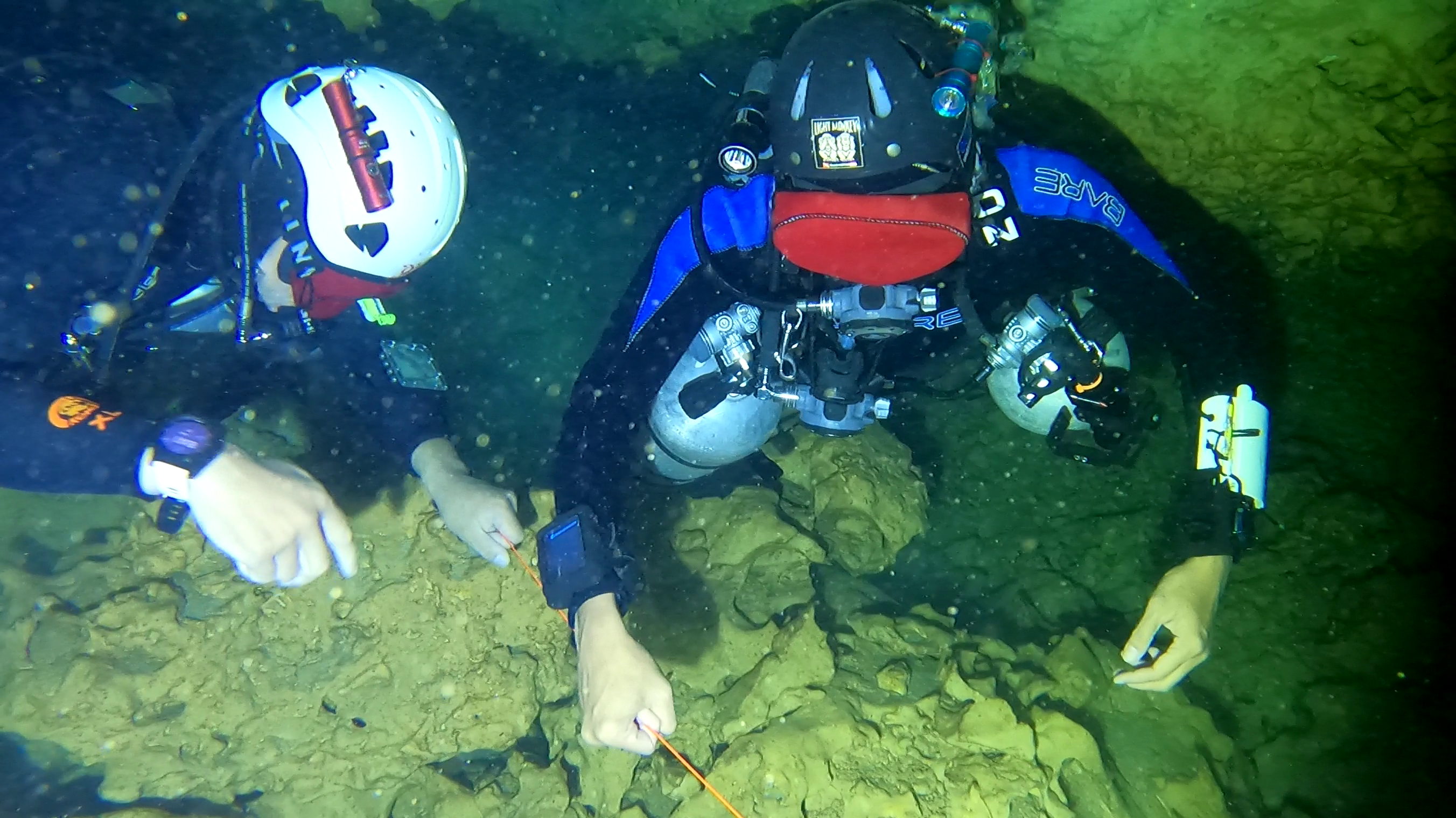
Exiting the cave in a simulated no visibility exit.
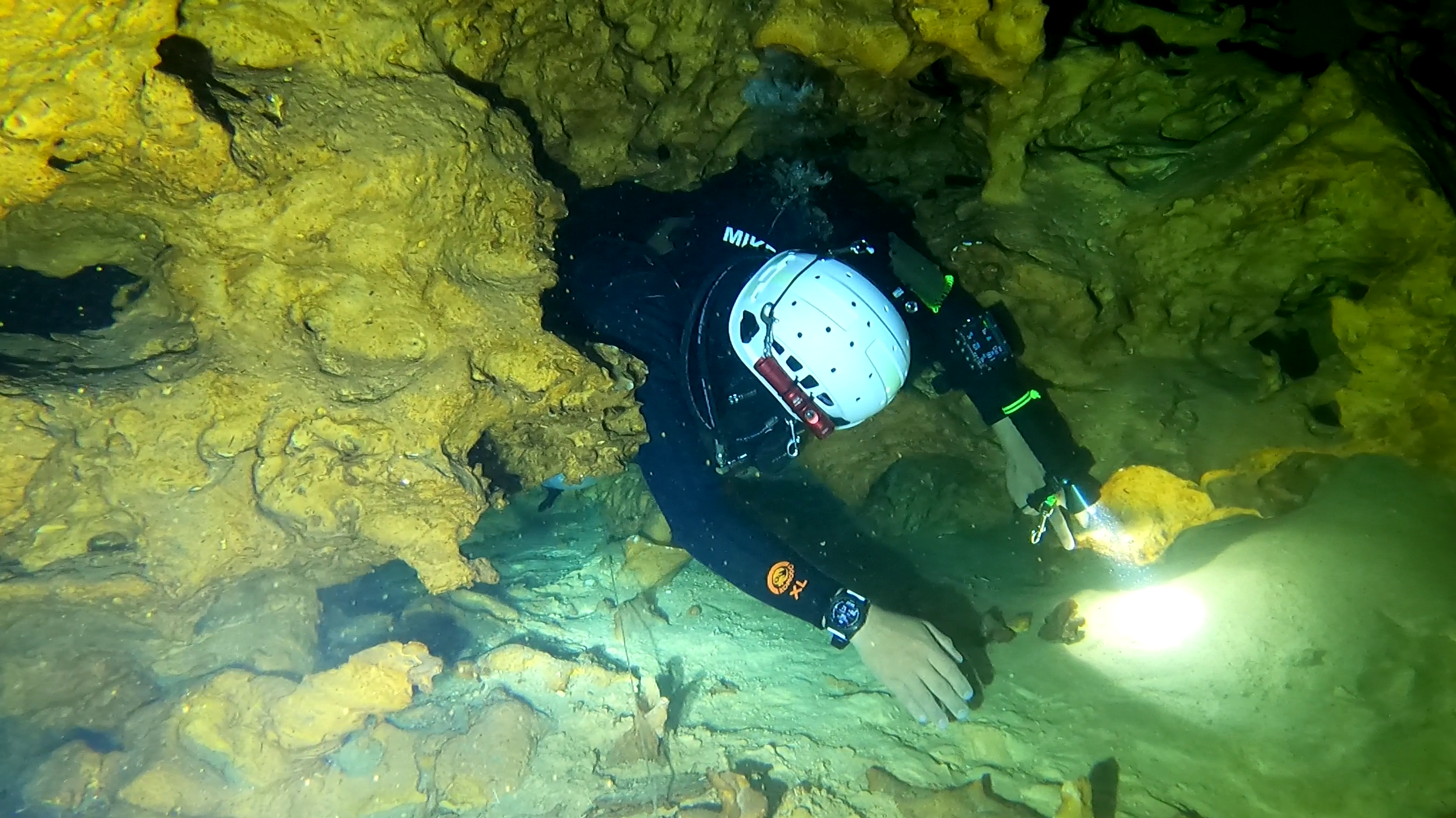
Divers passing a restriction in an underwater cave.
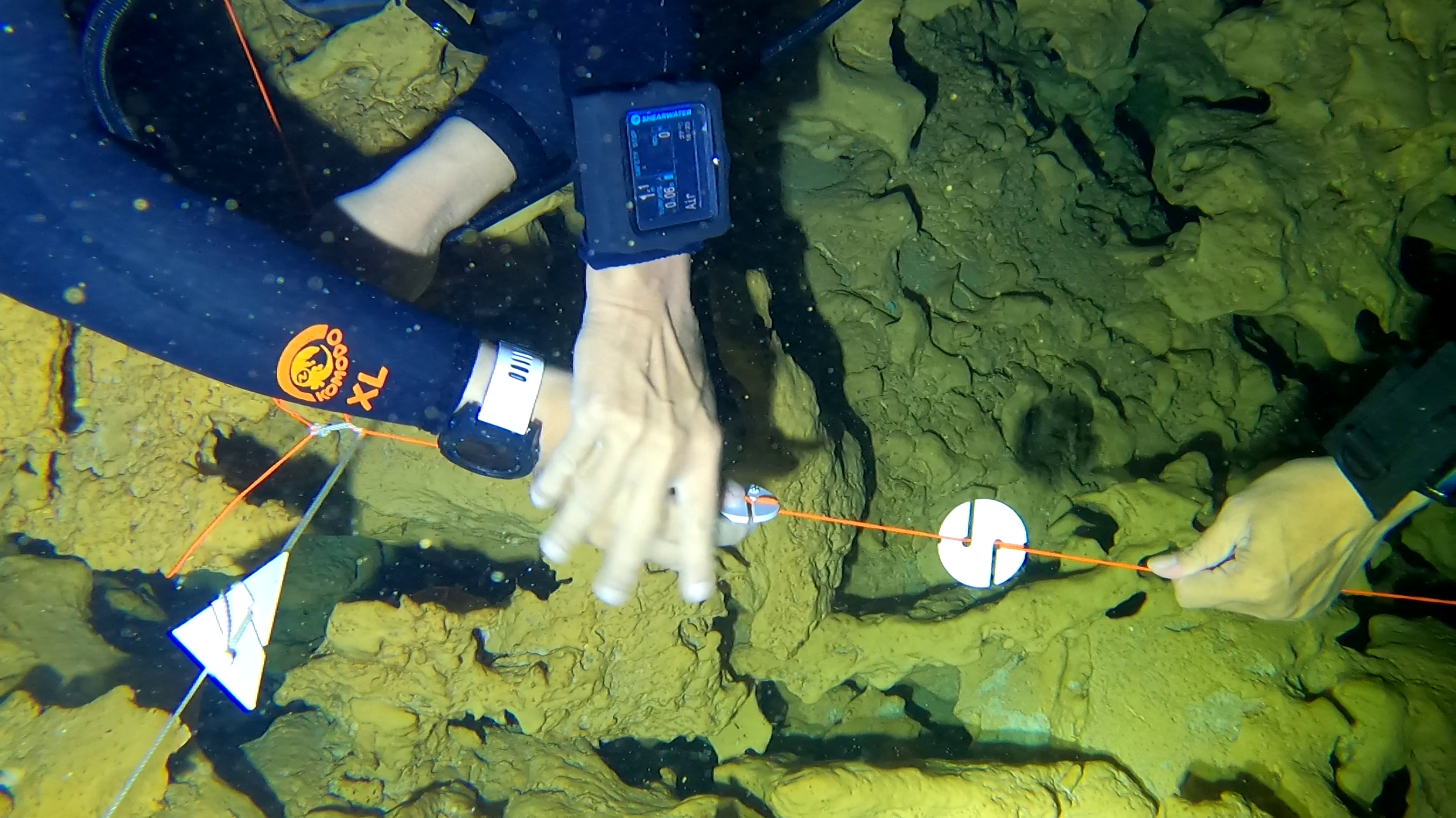
Two divers trying to find the correct exit.
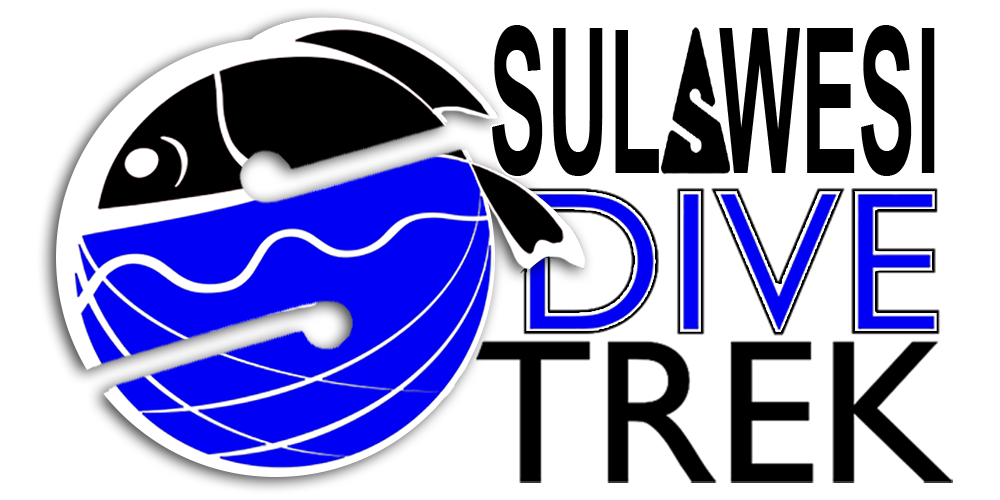
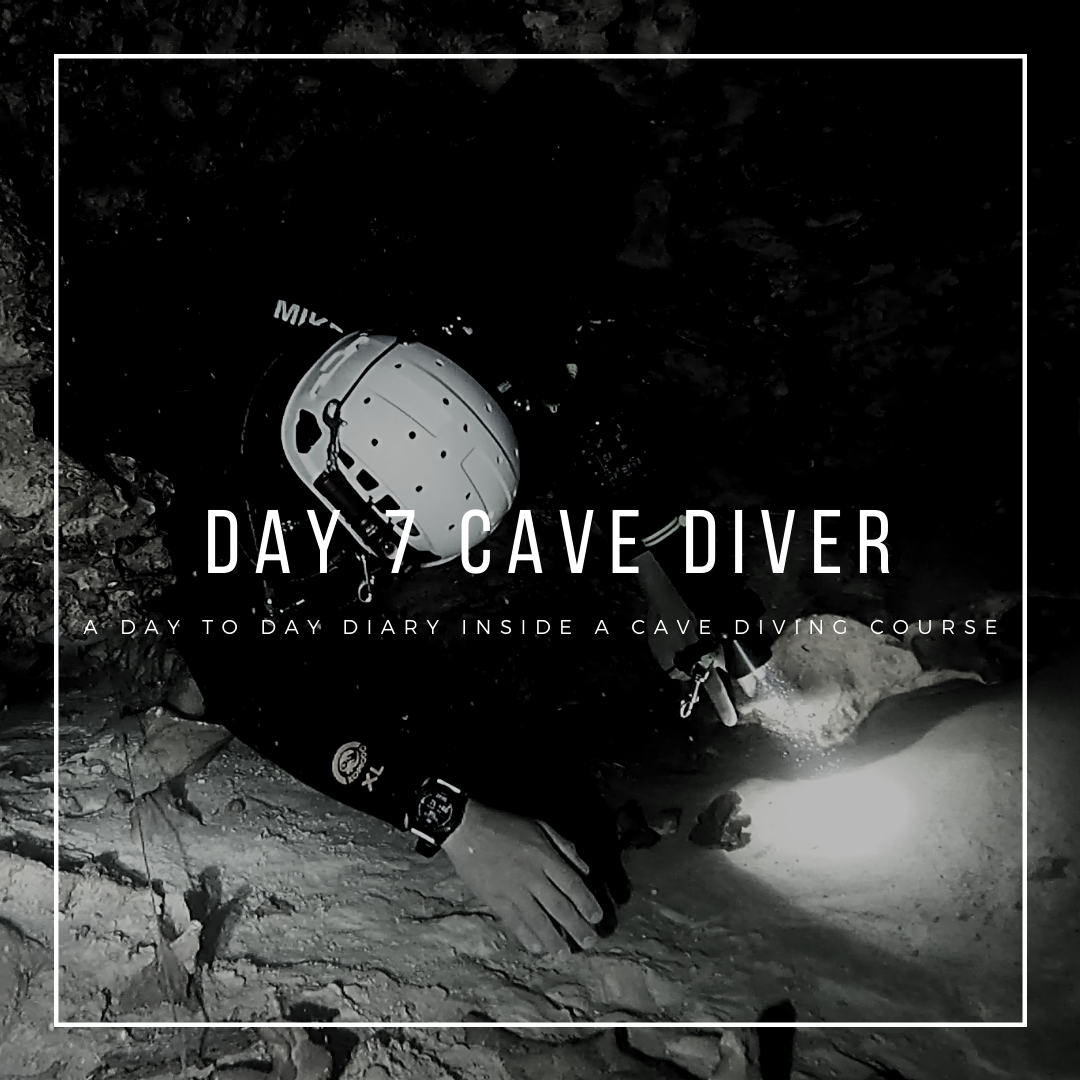
0 Comments
Trackbacks/Pingbacks